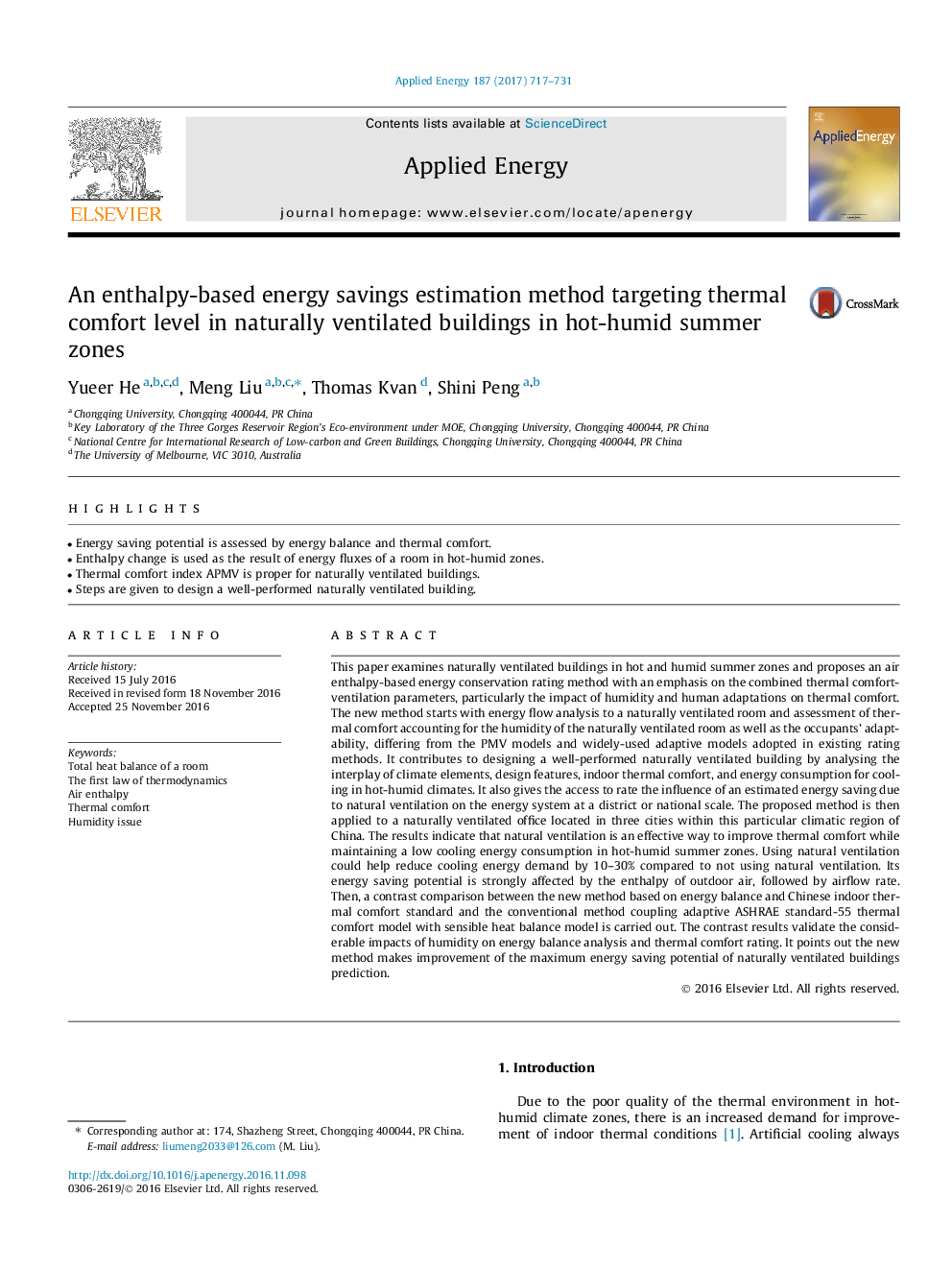| کد مقاله | کد نشریه | سال انتشار | مقاله انگلیسی | نسخه تمام متن |
|---|---|---|---|---|
| 4916712 | 1428103 | 2017 | 15 صفحه PDF | دانلود رایگان |
عنوان انگلیسی مقاله ISI
An enthalpy-based energy savings estimation method targeting thermal comfort level in naturally ventilated buildings in hot-humid summer zones
ترجمه فارسی عنوان
روش تخمینی صرفه جویی انرژی بر اساس آنتالپی، هدف قرار دادن سطح راحتی حرارتی در ساختمان های به طور طبیعی تهویه شده در مناطق تابستان گرم و مرطوب است
دانلود مقاله + سفارش ترجمه
دانلود مقاله ISI انگلیسی
رایگان برای ایرانیان
کلمات کلیدی
کل تعادل حرارتی یک اتاق، اولین قانون ترمودینامیک، آنتالپی هوا، راحتی حرارتی، مسئله رطوبت،
موضوعات مرتبط
مهندسی و علوم پایه
مهندسی انرژی
مهندسی انرژی و فناوری های برق
چکیده انگلیسی
This paper examines naturally ventilated buildings in hot and humid summer zones and proposes an air enthalpy-based energy conservation rating method with an emphasis on the combined thermal comfort-ventilation parameters, particularly the impact of humidity and human adaptations on thermal comfort. The new method starts with energy flow analysis to a naturally ventilated room and assessment of thermal comfort accounting for the humidity of the naturally ventilated room as well as the occupants' adaptability, differing from the PMV models and widely-used adaptive models adopted in existing rating methods. It contributes to designing a well-performed naturally ventilated building by analysing the interplay of climate elements, design features, indoor thermal comfort, and energy consumption for cooling in hot-humid climates. It also gives the access to rate the influence of an estimated energy saving due to natural ventilation on the energy system at a district or national scale. The proposed method is then applied to a naturally ventilated office located in three cities within this particular climatic region of China. The results indicate that natural ventilation is an effective way to improve thermal comfort while maintaining a low cooling energy consumption in hot-humid summer zones. Using natural ventilation could help reduce cooling energy demand by 10-30% compared to not using natural ventilation. Its energy saving potential is strongly affected by the enthalpy of outdoor air, followed by airflow rate. Then, a contrast comparison between the new method based on energy balance and Chinese indoor thermal comfort standard and the conventional method coupling adaptive ASHRAE standard-55 thermal comfort model with sensible heat balance model is carried out. The contrast results validate the considerable impacts of humidity on energy balance analysis and thermal comfort rating. It points out the new method makes improvement of the maximum energy saving potential of naturally ventilated buildings prediction.
ناشر
Database: Elsevier - ScienceDirect (ساینس دایرکت)
Journal: Applied Energy - Volume 187, 1 February 2017, Pages 717-731
Journal: Applied Energy - Volume 187, 1 February 2017, Pages 717-731
نویسندگان
Yueer He, Meng Liu, Thomas Kvan, Shini Peng,
